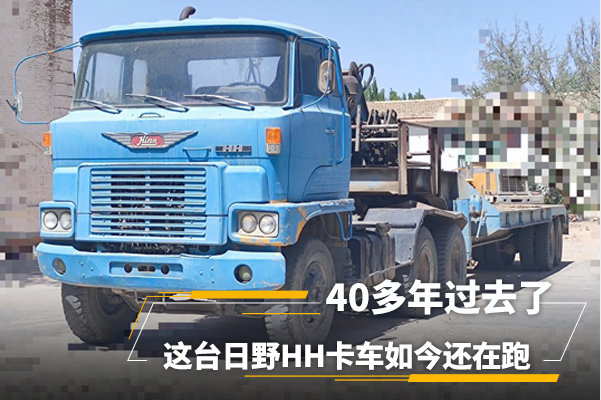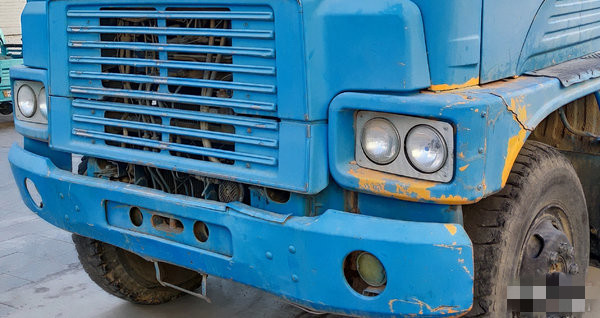OEM Customized Jost Landing Legs – HINO brake drum – MBP
OEM Customized Jost Landing Legs – HINO brake drum – MBP Detail:
Hino (Japan) company has a deep relationship with Isuzu (Isuzu) Company in the early days. Before 1942, Hino and Isuzu were still a company. After 1942, Hino became an independent company and launched the name of Hino in 1946. In 1950, Hino began to focus on the manufacturing of commercial vehicles.
Hino has become the largest commercial vehicle manufacturer in Japan, with 8583 employees and total assets of 72.7 billion yen.
In August, 2001, Hino was controlled by Toyota Motor, which owns 50.1% of its shares. After being held, in September 2002, Toyota and Japan jointly launched the first fuel cell bus fchv-bus2 in Japan. The latest news is that in October 2003, Hino and Isuzu’s bus business will be merged to form a new joint venture.
Hino bus products include city bus and tourist bus. City buses are mainly blue belt city and Rainbow series, while tourist buses are mainly selega, melpha and liesse series. Among them, selega is a large bus, melpha and liesse are medium buses. Selega bus participated in Shanghai World Bus Expo and won high praise.

Shenfei Hino Automobile Manufacturing Co., Ltd. is a new joint venture established by Shenfei Industrial Group Co., Ltd. on the basis of the former Shenfei Automobile Manufacturing Co., Ltd., together with Hino auto Co., Ltd. and Toyota Tongshang Co., Ltd.
On September 27, 2000, the joint venture project was officially signed, with a total investment of US $73.7028 million and a registered capital of US $61.43 million.
On December 26, 2000, Shen feihino Automobile Manufacturing Co., Ltd. was officially established, with Li Fangyong as the chairman (Chinese side concurrently), Liu Yongtao as the general manager, and Yasunari iwazawa as the executive deputy general manager (Japanese side).
After the joint venture, shenfeiriye introduced four kinds of vehicles (CH, RR, ru2pssa, ru2prss) and one chassis (rm2pssd) from the parent company of Japan. Shenfeiriye has 12 production lines, such as electrophoresis painting, chassis assembly and vehicle inspection, with annual production capacity of 3500 large and medium-sized buses and 5000 special chassis for passenger cars (double shifts).
The brand new Shen feihino aims at the cutting-edge manufacturing technology and management mode of today’s international automobile manufacturing industry, adopts a large number of new technologies, new processes, new equipment and new materials, fundamentally improves the production capacity, product quality and management level, forms the integration of design, production and sales, and develops high, medium and low-grade buses and high and medium grade chassis simultaneously Shen feihino is becoming one of the most advanced bus manufacturers in Asia.
As we all know, in the late last century, China imported many trucks from neighboring Japan. These trucks have won a good reputation in China with their durable and reliable advantages, and have made great contributions to the economic development of the motherland. At the same time, it is also a precious memory of many people when they were young or many old drivers.
What I want to show you today is a Hino HH tractor that was imported to China in the 1970s and still works normally.
At the first sight of this car, you may think that the maintenance of this old car is good, but what if I told you that this is an old car that has been born for nearly half a century?
After seeing the photos, the author was surprised, because now even the scrapped Hino HH remains can hardly be seen, let alone such a car in such good condition and still working normally.

The Japanese four circle lamp design is quite classic. If you look carefully, the original paint color of the vehicle should be yellow. Later, for various reasons, it was painted with a layer of blue paint. According to the paint dropping situation, you can see that it took a long time to brush the blue paint.

Hino “Eagle” logo and “HH” model logo is still so clear, up to now there is no sign of paint or rust. Silver net has also been unified painted blue, less a unique “beauty”. And the steering lights on the left and right sides of the vehicle are still intact!

The original rear-view mirror on the left side and the still bright door handle, and the rear-view mirror on the right side of the vehicle are missing. After all, it’s inevitable that they have been working for so many years.

The original 300L iron fuel tank and the anti-collision net with Japanese characteristics are still in good condition. It is obvious that the rear axle fender has been severely impacted, and a large part of it has been replaced with iron sheet. The exhaust pipe is very abrupt. It’s about half a meter beyond the body. It’s not known whether it is also affected by American cars here. The trailer line interface is very unique. It is upward.
The vehicle is a 6 × 4 chassis structure with a short front suspension, and gets on from the rear of the front wheels. Maybe Japan imitated the design of American Flathead truck at that time. Similar designs include Renault magnon and Tatra T815. You should be familiar with them.The front axle is steel plate suspension with hydraulic shock absorption, with a maximum load of 4.5 tons.

The rear axle is a single reduction axle popular in Japan. The damping of the rear axle is steel plate with torsion bar. The maximum load of a single axle is 13 tons. If you look at the English of “Hino” on the axle head carefully, the speed ratio of the rear axle is not found.

In Japan, you can hardly see trucks with wheel reducers. The speed ratio of their main reducers can be quite large. Even for large cargo transportation in Japan, it is difficult to see wheel reducers.
At the end of last century, trucks imported from China’s Nissan Diesel were once equipped with wheel reducing bridges with the English word “Nissan Diesel” on the axle head. At that time, they were used for large-scale transportation, but few photos were left.
The United States is also very similar to Japan in this respect. American cars almost do not need to reduce the bridge by wheels. However, in some large cargo transportation, we occasionally see the use of Meritor or SISU to reduce the bridge by wheels.

At that time, there were two types of HH engines, ed100 and ef100 respectively. Ed100 is a 235hp straight six engine with a maximum torque of approximately 785nm. The ef100 is a 270hp V8 engine with a maximum torque of approximately 873nm. The vehicle can be judged by observing the engine at the rear of the cab to determine the V8 engine with ef100.
The transmission of the vehicle is a 5-speed high and low gear transmission. The first and second gears are not equipped with synchronizers, and the third to fifth gears are equipped with synchronizers. The maximum speed of the vehicle can reach 83 km / h.
In addition, according to the left and right rudders and engines of the vehicle, there are different codes for the vehicle. The left rudder vehicle is called hh430 and hh440 according to the L6 and V8 engines, and the right rudder vehicle is called hh330e and hh340e according to the L6 and V8 engines, so the exact name of the vehicle should be Hino HH 440.
It is obvious that this vehicle is a semi-trailer, and the rear trailer should be a double track four axle trailer from the original factory.
Hino HH original factory can choose two kinds of low bed vehicles, a flat car and a container trailer, a total of four types of trailers, it can be seen that this trolley is a gooseneck low bed trailer, it is speculated that it is mainly used to transport tracked construction vehicles or machinery.
It’s really surprising that after nearly half a century of baptism, the condition of the car is still so good. In some areas without jurisdiction, this car can still give full play to its waste heat for several years and continue to contribute to the construction of the motherland. This car has witnessed the reform and opening up of the motherland and the rapid development of China’s economy. I wonder if this car also reminds you of Japanese cars?
FAQ
Q1. What is your terms of packing?
A: Generally, goods are sealed in ploy bags and packed in cartons and pallet or wood cases.
Q2. What is your terms of payment?
A: T/T (deposit + balance before delivery). We’ll show you the photos of the products and packages before you pay the balance.
Q3. What is your terms of delivery?
A: EXW, FOB, CFR, CIF.
Q4. How about your delivery time?
A: Generally, it will take 25 to 60 days after receiving your advance payment. The specific delivery time depends on the items and the quantity of your order.
Q5. Can you produce according to the samples?
A: Yes, we can produce by your samples or technical drawings. We can build the molds and fixtures.
Q6. What is your sample policy?
A: We can supply the sample for free charge if we have ready parts in stock, but the customers have to pay the courier cost.
Q7. How do you make our business long-term and good relationship?
A: We provide our clients with one-stop service, from specific component to final assembled products, solving various problem for different clients all over the world.
Product detail pictures:
Related Product Guide:
We persistently execute our spirit of ''Innovation bringing growth, Highly-quality making sure subsistence, Administration marketing reward, Credit history attracting clients for OEM Customized Jost Landing Legs – HINO brake drum – MBP , The product will supply to all over the world, such as: Ukraine, Israel, Barbados, We adhere to client 1st, top quality 1st, continuous improvement, mutual advantage and win-win principles. When cooperation together with the customer, we provide shoppers with the highest high-quality of service. Established good business relations using the Zimbabwe buyer inside the business, we've got established own brand and reputation. At the identical time, wholeheartedly welcome new and old prospects to our company to go to and negotiate small business.
The goods are very perfect and the company sales manager is warmful, we will come to this company to purchase next time.




